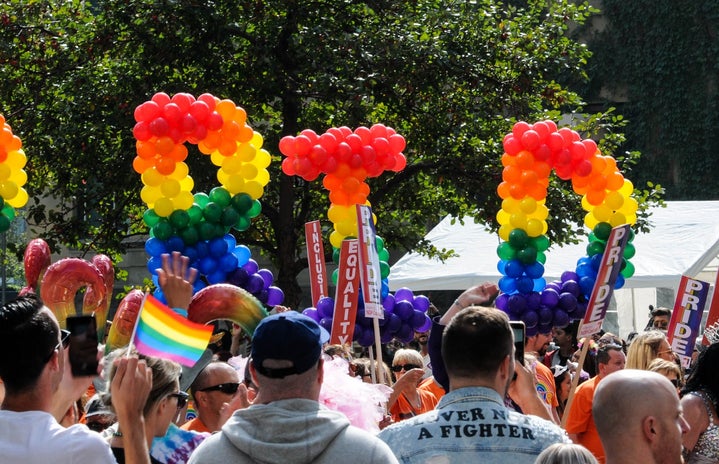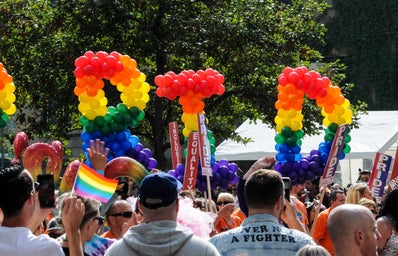“RuPaul’s Drag Race” did not start out as the television juggernaut with a massive cult following that it is today. Filmed in the basement of a studio in Burbank with a minute budget and an unclear direction, “Drag Race” was the definition of humble beginnings when it first aired in 2009. However, “RuPaul’s Drag Race” has surpassed all initial expectations and has become a cultural phenomenon. With 14 traditional seasons and six “All-Star” seasons in the United States, along with international spin-off franchises in several different countries, “Drag Race” is arguably the most prolific reality television franchise in the world.
Even though 2009 was not that long ago, queer representation in media has evolved significantly since then, and “Drag Race” helped with that. In more ways than one, “Drag Race” was the first show of its kind. It was one of the first television shows where the queer community was its sole target audience, and it celebrated drag and the queer community without tokenism or making queer people the butt of a joke for straight people to laugh at. “Drag Race” was created with queer people specifically in mind; it didn’t come along with an explanation for itself — you either understood it, stuck with it long enough to understand it, or just moved on.
Sure, “Drag Race” started off not taking itself seriously; it certainly did not have a flawless beginning. The first couple of seasons are melodramatic and cringey at times, but throughout all the bumps that were in the road leading to “Drag Race” finding its footing; the show has remained unapologetic. From the time it was a niche show airing on Logo to now, with its Emmy awards and staggering popularity on VH1 and multiple streaming platforms, “Drag Race” has never failed to provide a safe haven for queer people to exist in peace and celebrate their identities. In a way, the progression of “Drag Race” is a parallel to the journey queer people go on as they come to accept their identity.
Queer representation is a vital factor for the survival and flourishment of the community. While “Drag Race” has had its problematic moments, overall it has remained a pillar of positive queer representation. As cliche as it may sound, “RuPaul’s Drag Race” is more than just a reality competition show. Of course casual viewing is an option, as it is with any other reality show, and that is perfectly fine. However, for the sake of the discussion of queer representation, a more in-depth look at “RuPaul’s Drag Race” is required.
Beyond its talented cast of queens, unique challenges, and showstopping runways and electrifying lip-syncs, “Drag Race” has been a bonding point for the queer community. Episodes are aired live in gay bars for community viewings, DragCon is a yearly event where Drag Race alums set up booths where fans can meet them, and social media on its own has only helped the reach of “Drag Race.” More and more, “Drag Race” is becoming more than a show you can watch, but also something you can experience with other members of the queer community.
The impact of “Drag Race” is something that can’t be measured but is something that can be felt. Drag is being taken seriously as an art form, arguably more so than it ever has been before. Also, “Drag Race” has been able to educate people inside and outside of the queer community about queer history while also managing to be entertaining and revolutionary.
“Drag Race” has been especially impactful for its millennial and Gen-Z viewers. Many of them grew up with the show, and it helped them embrace their identities earlier than they would have otherwise. In “Drag Race”’s later seasons, there have been multiple queens who have stated that they started doing drag because of watching “Drag Race.” A recent example of this is “Drag Race” Season 14 queen Alyssa Hunter who said in her Meet the Queens interview that she named herself after “Drag Race” Season 5 queen Alyssa Edwards.
This is proof enough that “Drag Race” has impacted the queer community in a positive manner by introducing new generations to the art and history of drag. “Drag Race” has helped solidify drag and queer artistry as a part of mainstream media and, by proxy, has helped normalize celebrating queerness as a whole. “Drag Race” helped show that drag is for anyone who values the art form and values the history behind it. Like RuPaul herself said, “We’re all born naked and the rest is drag.”
Without a doubt, “RuPaul’s Drag Race” was one of the pioneers when it came to creating a more positive, uplifting image of the queer community in media, helping queer media representation evolve into what it is today. “RuPaul’s Drag Race” was a landmark moment for the queer community and helped change the course of queer history. It is proof that the queer community is here, has been here, and is here to stay. If for nothing else, “Drag Race” is not only a representation of queerness but also a representation of queer solidarity and queer survival.


